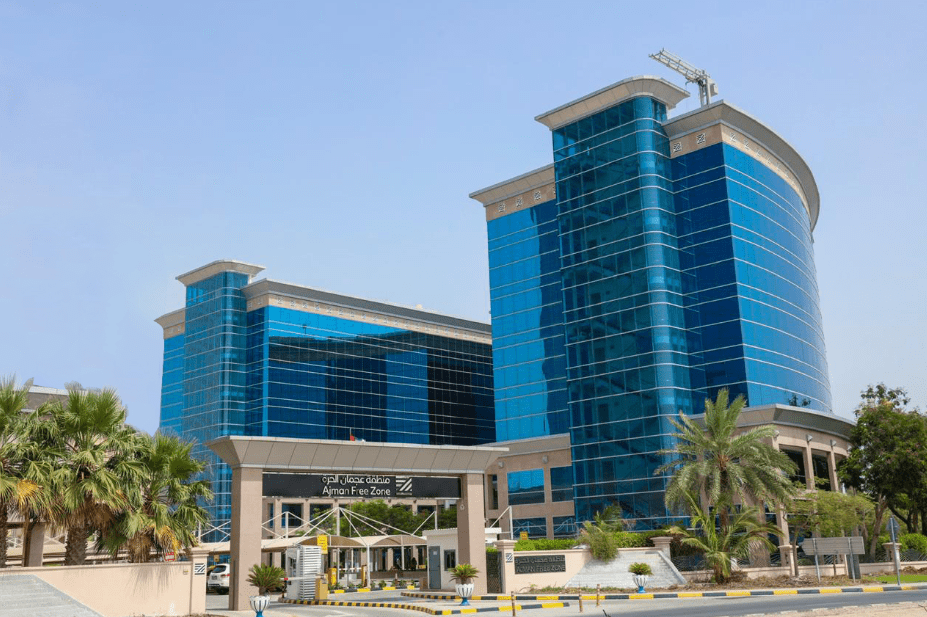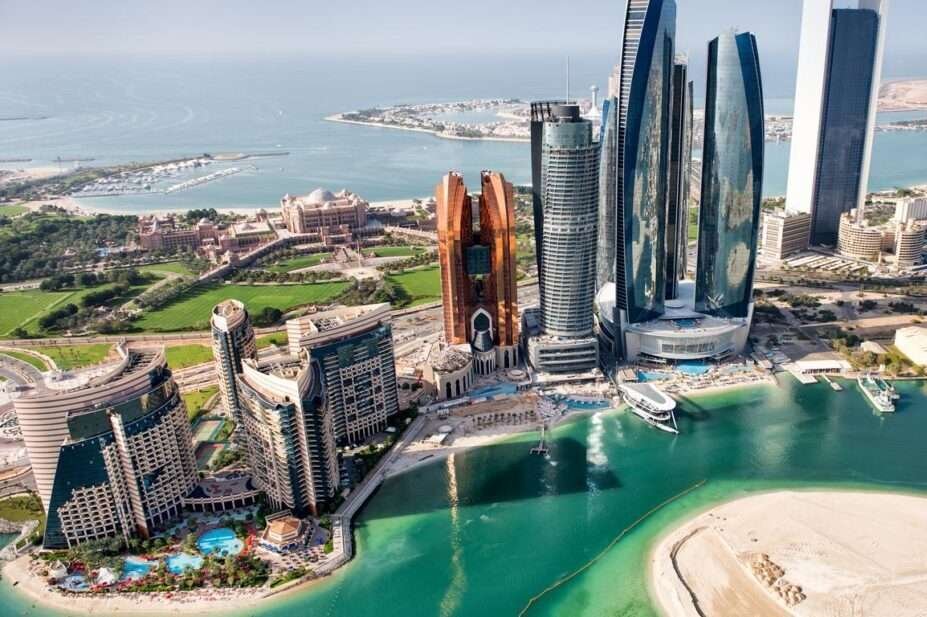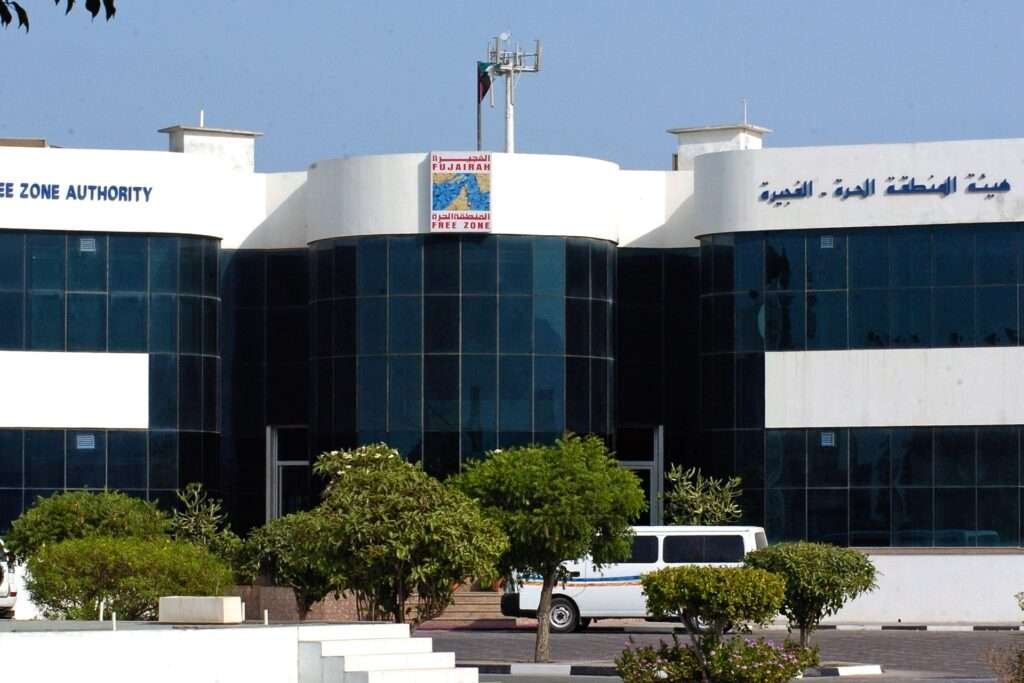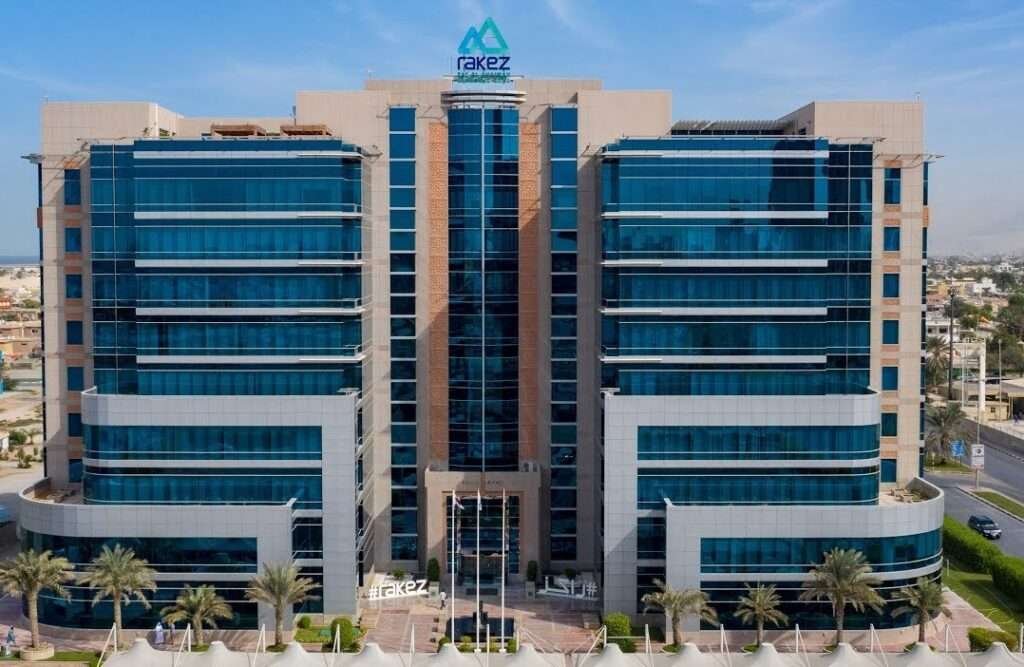Seven states, known as emirates, make up the country of the United Arab Emirates (UAE). Occupying 259 square Kilometers of the country, Ajman is the smallest of these seven Emirates. Ajman only covers about 0.3% of the total area of the United Arab Emirates. The Emirate is located in the center of the western coast of the UAE.
The nearest Emirate to this is the Emirate of Sharjah, bordering Ajman on its north, south, and east. Umm Al Quwain, the least populous of the seven Emirates lies 10 Kilometers North. Dubai, the most populous and urbanized emirate of UAE, lies 10 Kilometers south of Ajman. The close proximity to Dubai and relatively low rental costs make Ajman an attractive place to live for those who prefer to commute daily to their workplace in Dubai.
GEOGRAPHY
Three regions make up the emirate – the city of Ajman and two small inland enclaves of Al Manama and Masfut. The main city is the commercial district while the two enclaves are primarily agricultural. The urban area of Ajman City runs directly into the city of Sharjah, continuing its spread into Dubai. This forms a combined urban area known as the Dubai-Sharjah-Ajman (DSA) metropolitan area.
Out of a population of 361,160, approximately 95% reside in the city of Ajman. The Al Manama region lies 60km eastward from the city. It is a stunning landscape, with fascinating mountains rich in magnesium, chrome, and building stones, and beautiful valleys fertile for producing agricultural crops. The Masfut region, lying 110km southward of the Ajman city, is famous for its natural beauty, with high mountains, vast valleys, and moderate climate. Like Al Manama, Masfut also has very fertile soil, which is suitable for agriculture. The region located near the Hatta Mountains was once a habitat of leopards and gazelles. The development of a natural reserve is currently underway to protect the local flora and fauna.
Overlooking the spectacular Persian Gulf, Ajman has around 16 Kilometers of white sandy beaches peppered with lofty date palms. These are popular spots for families to gather under for picnics. The emirate is an excellent escape from the hustle and bustle of the city. It offers a great opportunity to enjoy a beautiful sea with turquoise waters. Nestled along the beaches are resorts and hotels catering to all budgets. These are perfect choices for coastal holidays or a short escape from the city on weekends. The small size of the city also offers a more intimate feel than many of the larger cities in the UAE. The other major tourist attractions in the emirate are Ajman Museum, Ajman Dhow Building Yard, and the archaeological site of Mowaihat.
CULTURE AND HERITAGE
The Al Nuaimi tribe, who migrated to the region in around 1775, formed Ajman. It was first recognized as an autonomous state in 1820. The emirate has beautiful cultural and heritage sites spread all over the emirate displaying this history. Ajman City exhibits history and heritage through its museum. The city’s tradition of craftsmanship is clear to see through its dhow-building yard, and you can experience its culture through its souks, camel races, and stud farm of Arabian horses. The inland enclaves of Al Manama and Masfout display history and heritage through their castles and forts.
The emirate combines the frenetic energy of a city and the tranquillity of a village. Immerse yourself in the urban elegance of Ajman City, and then get a taste of local life in the laid-back villages and towns of Manama and Masfout.
AJMAN MUSEUM
An 18th century fortress that was once the emirate’s first line of defense now houses the emirate’s museum. A collection of archaeological artefacts, manuscripts, and weapons are on exhibit here. The museum highlights local history and heritage with displays depicting the lifestyle and professions locals experienced in the past. The museum opened in 1981 after the fort functioned as a police station for a short stint from 1970.
AJMAN DHOW BUILDING YARD
The emirate’s Dhow Building Yard is one of the largest active dhow building yards in the world. On a single day, the yard can house around 30 boats. A dhow is an Arabic wooden boat with one or more lateen sails that are hand built using traditional methods. Historically, wooden dhows have played a major role in fishing, pearling, and trading across the regions. These ocean-going boats of Arabic origin are built with traditional tools. No construction plans were ever written for them. Instead, the guidelines were simply handed down through generations. The yard also now makes fiberglass dhows powered by diesel engines. These are used for racing events across the country. The dhow is one of the iconic emblems of the UAE, along with falcons from the ancient sport of falconry.
MOWAIHAT
Mowaihat is one of the most famous archaeological sites in the United Arab Emirates. In 1986, while laying new sewage pipes, the Municipal workers accidentally discovered a circular tomb. The style of tomb belonged to the Umm al-Nar period dating back to between 2000 and 2500 BC. Further excavation uncovered various artefacts from the same period. These included soft stones and painted ceramic vessels, over 3000 beads, two stamp seals, many copper implements, and human remains. Today, the Ajman Museum displays the unearthed findings from this site.
The Emirate of Ajman may not seem to tourists as a luxurious destination like the Emirate of Dubai. But, the current pace of infrastructural developments in the emirate forecasts a similar vision for the near future.
ECONOMY
The Ajman economy traditionally relied on fishing and trade. Today, fishing remains a big business in the emirate. Several processing plants and 150 artificial concrete coves built offshore aim to encourage fish breeding. It is also home to one of the few remaining dhow-building yards in the region. The Dhow Building Yard is surviving evidence of the region’s fishing, pearling, and trading history. From a sleepy fishing village to a thriving, energetic city, Ajman’s transformation has been remarkable.
Crown Prince of Ajman, H.H Shaikh Ammar Bin Humaid Al Nuaimi launched Ajman 2021 in 2012. The aim of this project is to build the emirate’s economy aligned with the goals of the UAE. This vision for the emirate has targeted five strategic sectors:
- Industry
- Tourism
- Transport and logistics
- Outsourcing
- Media
INDUSTRY
The Emirate’s industrial sector boasts the highest number of ready-made garment factories in the UAE. These make up almost 50% of all the factories in Ajman. The textiles business has historically dominated the emirate’s industrial profile. The economic developments in the commercial hub and neighbouring emirate of Dubai have also had a ripple effect on Ajman.
The ongoing economic developments in the emirate are further attracting businesses. As a result, this gives impetus to the development of malls, reputed hotel chains, leisure establishments, and residential townships. All these developments lead to the systematic urbanization of the Emirate.
The transformation of silent towns into vibrant economies was so significant that the government decided to form Ajman Real Estate Regulatory Agency (ARRA or ARERA). The government formed this agency to regulate emirate’s growing real estate sector. ARERA handles licensing and regulates Ajman’s real estate market. All land, villas, and apartments, freehold or otherwise, must be registered with ARERA. Ajman has the third biggest property market in the UAE and boasts an impressive 33% of foreign investments. Interestingly, it was the third emirate, after Dubai and Ras Al Khaimah, to offer freehold property.
TOURISM
Ajman also invests a great deal in developing its tourist attractions. As part of this, training is provided to people on imparting information about the history, culture, and heritage of the emirate to its tourists. The Ajman Tourism Development Authority (ATDD) continues to develop strategies to enhance tourism. This became an important focus after noticing the positive response received at this year’s Arabian Travel Market.
The Ajman Waterfront Strategic Plan is one of such initiatives aiming to attract tourism and commercial activities in the future. The plan comes under emirate’s Urban Planning Strategy 2030. Its aims include creating a clean and attractive waterfront with a beach park and a tramway running along the beach. The emirate’s Government intends to maximize its available land resources without reclaiming land from the sea. As a result, the marine environment will remain undisturbed and the view of the sea unobstructed for residents and tourists.
The ATDD has also signed a strategic cooperation agreement with the Sharjah Investment and Development Authority (Shurooq). This agreement pledges to promote all cultural and historical landmarks in Ajman and Sharjah. The agreement, in alignment with the visions of Ajman 2021, aims to attract 5 million tourists to the Emirate by 2021.
INFRASTRUCTURE
Ajman’s infrastructure helps to support the tourism industry as well as attracting Business investors. The excellent road networks of the UAE connect Ajman with the other emirates. The road networks are so efficient that it challenges a demarcation of the borders of all emirates. The nearest airports to Ajman are Sharjah International Airport and Dubai International Airport.
These airports are 26 Kilometers (16 Miles) and 32 Kilometers (20 Miles), respectively, from Ajman City. The government plans to build a Dh2.1 billion international airport in Al Manama on Ajman’s eastern border, expecting to receive its first flight in 2018. Residents and the tourism industry alike are excited to welcome the outcome of this project. The tourism industry hopes for a boost in tourism in the emirate and the occupancy levels in its resorts. Residents who had to provide contingency time on traffic jams and unexpected delays on their way to Dubai or Sharjah Airport could hope for a more relaxed journey to the airport on completion of this project.
COMMUNITY LIFE
A small city filled with traditional Arabian charm, Ajman has all the facilities and amenities essential for a quality life. Being part of a country with an exceptionally low crime rate, it is an ideal place to live and work.
The Islamic culture of the country places high importance on community safety, especially for women and children. Al Rashidiya Park and Mushrif Park are parks for women and children only. They contain a variety of play facilities, free-of-charge games, open green spaces with trees and bushes, a café, and plenty of shaded seating areas. The parks are large enough to accommodate the Ajman residents even at the busiest times. Al Rashidiya Park is 40,000m2 and Mushrif Park is 27,000m2.
Families enjoy spending their evenings together in Al Jurf Family Park. It’s a peaceful location that provides privacy amidst its greeneries. The parks in Ajman serve its residents as a place to relax and reconnect with nature after the urban rush. They also serve as a cooling counter to the desert heat. Ajman Corniche is another weekend or evening destination popular among residents. A variety of fast food outlets and cafes line the coast in this popular spot.
The government recognizes the importance of quality education and healthcare as keys to achieving sustainable economic development. The emirate has schools catering to different curriculum choices of residents of UAE, India, Pakistan, US, and the UK. Children of different nationalities enrolling in school together fosters interaction between diverse cultures. The emirate’s world-class healthcare boasts state-of-the-art hospitals and clinics employing highly-qualified medical practitioners.
GOVERNMENT INITIATIVES
The Ajman government strives to make the emirate more tourist and investor-friendly through their new projects. The ongoing projects are geared towards building multi-purpose community centers and complexes. They also involve plans to build road networks to connect with the urban sprawl from the rest of the UAE. The Ajman Municipality sets out to build well-planned cities with world-class infrastructure and aesthetically designed neighborhoods. These neighborhoods are hoped to both benefit the environment and be economically viable. The government hopes that the waterfront projects undertaken by the emirate will transform Ajman into a highly-desired destination for tourists as well as for the immigrants planning to live and work there.
The emirate plans its development strategies with long-term visions. These plans take into account all key factors, especially the growing population. Given the current annual growth rate of 8.2%, the population could reach its limit by 2030. Also, urban planning has to keep pace with the urbanization driven by market forces. As the population and business markets mushroom, several amenities will start showing demands for restructuring. These include roads, public water and sewage amenities, electricity infrastructure, telephone lines and mobile masts, fibre-optic cabling, public transport, and landscaping. Consequently, the government sees the need for a simultaneous and integrated restructuring of infrastructure. The developmental projects of the emirate foresee urban transport planning as integrated with urban land-use planning.
STRATEGIC PARTNERSHIPS
The Ajman government looks to forming public-private partnerships as one of the strategies for developing the emirate. Ajman Sewerage (Private) Company Ltd (ASPCL), founded in 2002, is an example of one of these partnerships. ASPCL combines the government of Ajman and two leading international experts on used water treatment, BESIX and Veolia. This initiative plans to bring an efficient solution for the ever-expanding need for collection and treatment of used water. This joint venture is an initiative of the emirate’s government in its endeavors of creating a smart city and a greener and cleaner UAE. These goals are in line with the UAE development visions.
The urban planning decisions in these projects have a view to improving efficiency. They are also aimed at turning DSA urban sprawl into smart cities in Ajman. This emirate has a unique competitive advantage over others because of its location and cost-effective business environment. Setting up and operating a business can cost 25% less than Dubai, owing mainly to low real estate prices. The businesses in Ajman also leverage affordable transportation costs. This is helped by its proximity to the Sheikh Mohammed Bin Zayed Road, connecting all emirates of the UAE. Most of the emirate’s industrial activity is located within 10 minutes of this major road.
LEGAL SYSTEM
The UAE Federal law and Federal Courts govern Ajman’s legal system. The UAE Federal laws provide a general outline on its enforceability. Thus, the courts allow reasonable discretion to each emirate in deciding on matters. This particularly applies to developmental matters like real estate rentals. The Constitution of UAE also permits each emirate to have its own legislative body and judicial authority. Despite this, Ajman is yet to become an independent authority. It is one of four emirates that chose to remain part of the Federal Judiciary authority.
BUSINESS AND INVESTMENTS
The ruler of Ajman is keen on replicating the successes of the Emirates of Dubai and Abu Dhabi. The emirate’s Chamber of Commerce and Industry has developed B2B electronic services to provide a communication channel between the Chambers’ members and businessmen. These services enable the exchange of investment opportunities between both parties. The service enables them to assess potential business opportunities and find suitable investors. This helps contribute to the diversified development of the Emirate.
AJMAN DEPARTMENT OF ECONOMIC DEVELOPMENT
The Ajman Department of Economic Development (Ajman DED) is the government body issuing licenses. These are necessary to conduct business in the emirate. The DED issues business licenses in compliance with the UAE laws and subject to approval from the respective Ministries of UAE. The government established DED with the aim of fostering sustainable economic development in Ajman with the involvement of UAE nationals. The DED and UAE Ministry of Economy have signed a mutual agreement to strengthen cooperation between the government entities by sharing expertise and knowledge and enhancing effective communication. The agreement aims to enrich the business environment in the Emirate and the UAE in general. According to the agreement, the Ajman DED will revamp its license issuance procedures to simplify them and make it easier to start businesses in the emirate.
AJMAN FREE ZONE AUTHORITY
Ajman has also gained popularity by it’s Free Zone (Ajman Free Zone/AFZA). AFZA provides incentives and allows concessions and exemptions to business initiatives. When established in 1988, AFZA spurred massive industrial development in Ajman due to its investor-friendly incentives. The huge influx of foreign investments this caused still motivates the government to pump in more funds for expansion and marketing, although with cautious optimism in the aftermath of the 2008 recession.
AFZA has set up representative offices in the UK, Russia, India, and Pakistan to be closer to potential overseas entrepreneurs. There are also ambitious aims to expand further to become well positioned for long term success, both globally and locally. The centers in respective countries will function as advisory offices for companies and investors looking to tap into investment opportunities in Ajman. The government is also investing in various new development projects, bestowing Free Zone and Freehold statuses on them. The Ajman government designs their projects, like other emirates of UAE, into mixed-use communities that include residences, commercial spaces, leisure facilities, luxury resorts, and hotels. As the emirate of Ajman continues to develop, it is emerging as a promising business destination for investors all over the world.
INVESTING IN AJMAN
Investments in Ajman reached an annual average rate of 10% during the period 2001 – 2013. The emirate’s GDP grew at an annual average rate of 11% during the same period. The economy of the emirate depends on a range of key sectors. These include manufacturing, construction, wholesale and retail, repairing services, real estate and business services, and the transport, storage, and communications sector.
The manufacturing sector contributed 35% of GDP in the year 2013. The construction sector followed by contributing 15% to the GDP, while the wholesale and retail trade and repairing services contributed 13%. The real estate and business services, and transport, storage, and communications sectors contributed 11% and 6%, respectively.
The exports, including re-export, recorded a high growth rate of 53% during the second quarter of 2014. Ajman vision 2021 has set the future directions for the development of the emirate in line with the vision of the United Arab Emirates 2021. This vision is based on the realization of sustainable development. The Government of Ajman set up the Department of Finance in 2010 to prepare and review the economic feasibility studies for government projects, and projects in which the government has contributions. The Department of Finance would also represent the government in conferences and committees relating to its financial matters inside or outside the UAE.
It’s clear to see why the Emirate of Ajman is so enticing to visitors and investors. Its strategic location, well-developed infrastructure, attractive investment environment, and economic policies that enhance economic development make it irresistible for businesses. Year-round sunshine, spectacular modern buildings framing the traditional architecture, a wide selection of fine hotels, and superb facilities and amenities combine to make Ajman a top destination. Perfect for both business and leisure.







